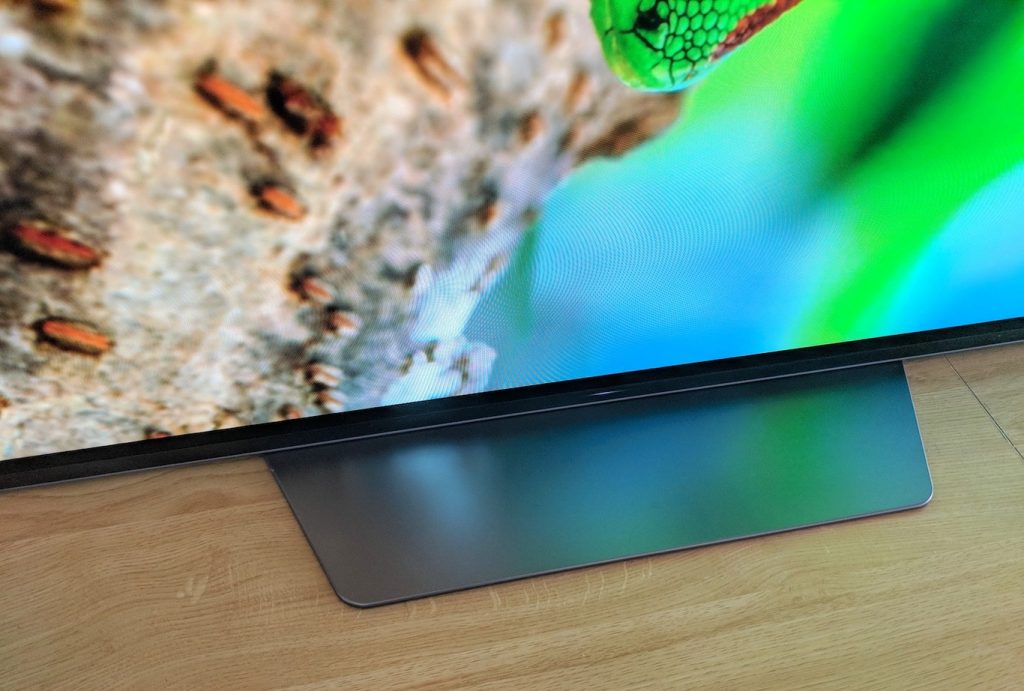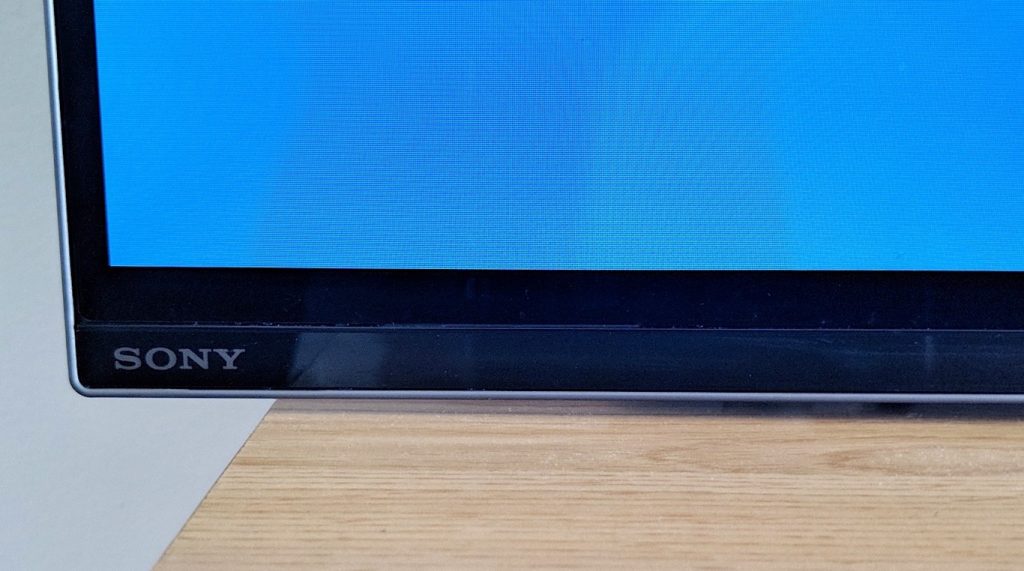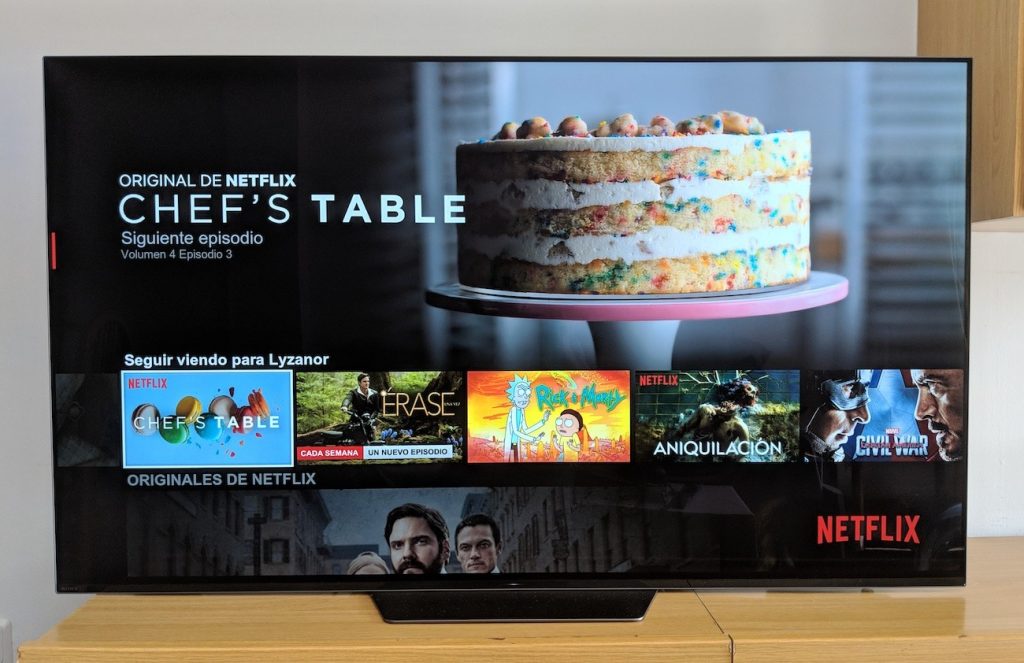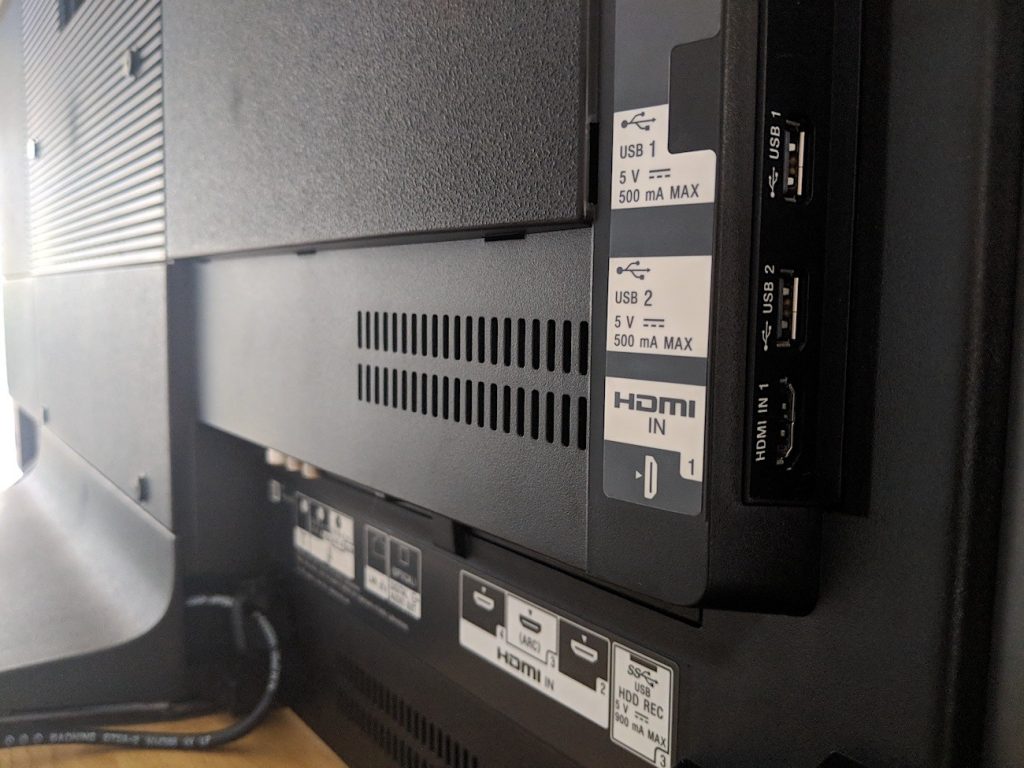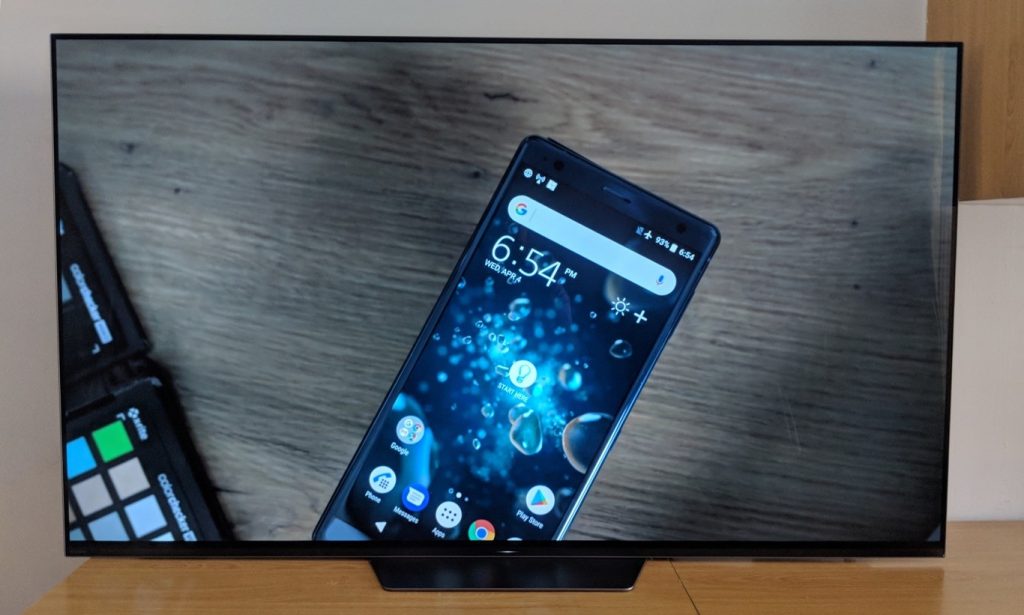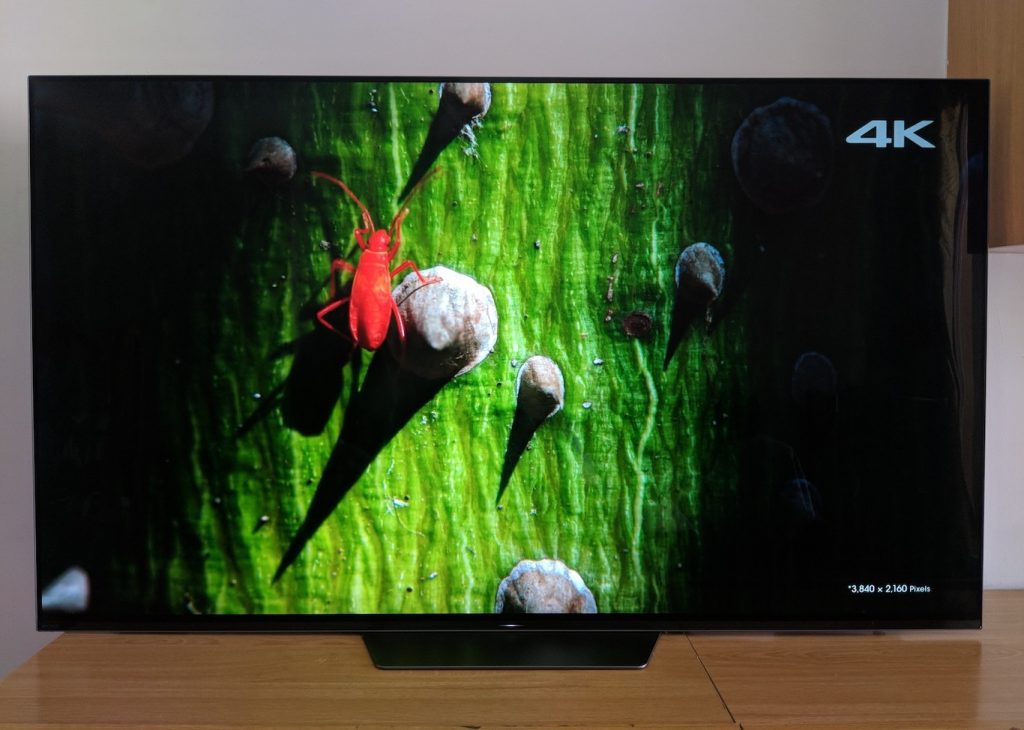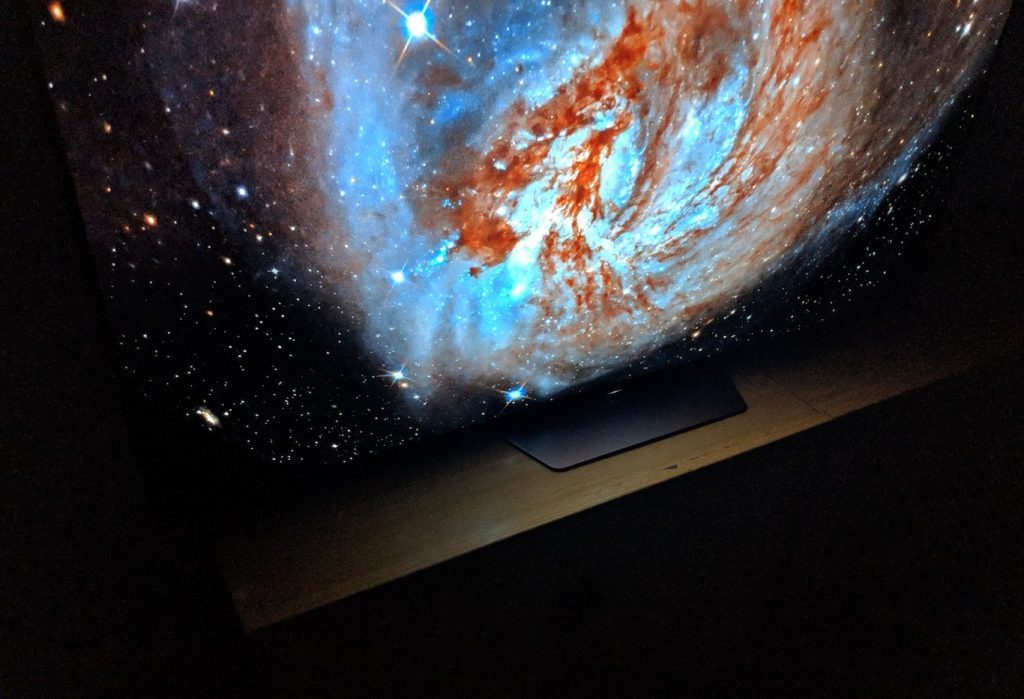Sony introduced us at the beginning of the year its new OLED TVs AF8 and XF90, two models with different technologies but an image quality focused on the most demanding public. The XF90 model adds a backlit LCD panel that we have already been able to analyze thoroughly. Now we have to check what the AF8 offers us, a 4K HDR TV with an OLED panel that launches a new range in the Sony catalog and is positioned as the most complete model next to the Sony A1, the company’s current flagship TV and with the that bears a great resemblance.
The OLED technology offers us deep blacks, a very pleasant colorimetric and a very high contrast, ideal characteristics for a good TV. In the case of the Sony AF8, to improve its image we also have a processor 4K HDR Processor X1 Extreme. This is responsible for executing the multiple algorithms that will help improve textures, gradients and reduce the noise level.
We’ve been testing it for three weeks. Watching movies in high definition, consuming hours and hours of Netflix, playing, downloading applications from your Android TV system, listening to video clips with your Acoustic Surface sound system and watching traditional TV channels. An intensive use to tell you all the details of the new high-end television for 2018. All in all, here we leave you with our analysis of the Sony OLED AF8 TV.
Sony AF8 OLED TV: Technical Specifications
| SONY AF8 OLED TV | |
| SIZES | 55/65 inches |
| RESOLUTION | 4K UHD (3840 x 2160 points) |
| PANEL TECHNOLOGY | OLED (10 bits, 120Hz) Support DCI-P3 HDR 10 / HLG / Dolby Vision |
| IMAGE IMPROVEMENT | 4K HDR Processor X1 Extreme 4K X-Reality Pro TRILLUMINOS Motionflow XR |
| HDMI PORTS | 4 HDMI (1 side / 3 bottom), HDCP2.2, 1 ARC |
| CONNECTIVITY | 3 USB, WiFi 802.11a / b / g / n / ac and Bluetooth 4.1, integrated Chromecast. Duplicate screen (Miracast). Video & TV SideView (iOS / Android), HEVC, 2 tdt-2 |
| IMAGE MODES | Live, Standard, Custom, Professional Cinema, Home Theater, Sports, Animation, Live-Photography, Standard-Photography, Custom-Photography, Games and Graphics |
| SOUND | Acoustic surface. ClearAudio + Dolby Digital, Dolby Digital Plus and Dolby Pulse. |
| SMART TV | Android TV 7.0 |
| STORAGE | 16 GB |
| VESA | 55″: 300 x 200 mm 65″: 300 x 300 mm |
| DIMENSIONS AND WEIGHT | 55″: 122.6 x 71.7 x 25.5 cm / 22.2 kg 65″: 144.7 x 84.1 x 25.5 cm / 28 kg |
| PRICE | 55″: 2799 euros 65″: 3799 euros |
Sony is committed to minimalism and a more classic design in its new OLED
With the Sony OLED AF8 we have a television that will convince the majority of users. Unlike the A1, where we had a more avant-garde design and a certain inclination, with the AF8 we return to a television with a more classic style, central base and all the protagonist for the screen.
Beyond the central LED on / off that we can hide at our choice, there are no front elements that distract us from the image. Sony has been quite pragmatic and with the AF8 we have a TV that perhaps does not attract attention because of its design, but it will be good in most homes since we only have a small black frame and a practically flat and silver base that we think is quite elegant.
The OLED screen is the main protagonist of the Sony AF8 and there is no element that distracts us from the image, except for a small central silver base.
The foot of the AF8 does not protrude excessively. In total we have a television that will occupy 25 centimeters from the back bottom, to the tip of this base. What in practice is a gain of space of just over eight inches from the A1?
The base is flat and the TV is at the level of the table or the surface where we place it. If we have a small drop or there is a jump, we will notice, but the TV is always stable and does not need to be supported by the tips, since most of the weight is between the base and the central part. In our case, we had the TV slightly over the corner and has not been an impediment to make normal use of it.
In the lower left corner we find the Sony logo and although if we approach it is easily appreciated, from the sofa or a couple of meters we will not realize it is there.
That minimalism of the front is also translated to the back, although as in general with the whole AF8, it does not surprise. We are facing an OLED TV of the highest range but the sensations are closer to the XF90 series and the rest of the family than the manufacturer’s star model.
In the back we find a totally smooth upper part and a central bar with the BRAVIA logo. The finishes are plastic and we have the connectors on one side. Sony usually offers removable compartments to cover these areas and both the cables and connections are hidden, giving a feeling of greater neatness.
The power or antenna cables are collected in the lower part and with the back cover, which has a similar shape to the front base but thicker are hidden. In the center we find the rear subwoofer that complements the Acoustic Surface system that we will later describe.
The placement of the connectors seemed correct. With HDMI ARC, Ethernet and antenna ports on the bottom and USB, digital optical and HDMI on the side. For those looking for a functional and practical TV, this AF8 fits within those parameters.
The connections are easily accessible and unlike the OLED A1 model, we will not have any problem in hanging it on the wall.
Regarding hanging it on the wall, we have VESA compatibility in sizes that vary depending on the inches of the model, but they are not exactly very wide measurements and there will be no problems in finding compatible supports. In fact, unlike the Sony A1 where we had a design designed to be placed on a surface, with this Sony AF8 we can hang it from the wall without problems, leaving a distance to the wall of about 76mm.
The frames of the Sony AF8 are finished in aluminum and are very thin, something usual in OLED screens where the thickness does not exceed the centimeter. The AF8 is not the thinnest television on the market, but it does have a feeling of being thin and is clearly a long way from the considerably thicker LCD TVs.
Connectivity and remote control
We are facing a high-end television and how could it be otherwise has all the necessary connections to enjoy the maximum content in high definition.
Sony adds HDMI 2.0 ports, USB recorder, TDT-2 and all the necessary connections nowadays.
On the side we have two USB 2.0 ports and one HDMI. In the lower part we find a USB recorder 3.0 and three additional HDMI ports, of which port 3 is HDMI ARC and both 3 and 2 are also HDMI 2.0. The latter will be what we use to connect the Blu-Ray or video consoles to play content in 4K / 60fps. Of course, previously we must activate it through the Settings> External inputs> Improved format.
Also in the lower part we will find the antenna connection. The AF8 has a dual tuner, DTT-2 and WiFi 802.11ac, a standard to guarantee the best connection even though the router is not in the same room as the TV.
The remote control of the AF8 is the same control of the Sony TVs during the last years. It works through infrared, keeping the Bluetooth only to activate the microphone that incorporates. We have buttons to access directly to Google Play and Netflix and the other buttons to access the menus.
In control is light, made of plastic and the controls are quite intuitive, but we are missing an evolution in its design. Something more current, with a touch interface and close to the premium level offered by the controls of the competition in its most advanced televisions.
User experience: Android TV needs an update
The system of ‘Smart TV’ that we find in this television is Android TV 7.0 Nougat, the Google platform oriented to televisions and large screens. The system is practical, easy to control via mobile thanks to Chromecast and we can search on the television by voice. However in the AF8, moving through the menus can be very tedious. The animations, open applications and in general all the use is too slow, partly caused by the MediaTek processor included in the TVs for years and causes the user experience is not what was expected. And is that even with much cheaper Android TV devices we have noticed a greater fluidity.
Regarding the applications, on Android TV we have access to a large catalog of applications from Google Play such as YouTube, Netflix, Amazon Prime Video or Movistar +. Sony does not include its own applications beyond its own music and video player, in addition to Sony Select with application recommendations. We also continue to find Samba Interactive TV, a channel discovery service of questionable usefulness.
Android TV is a system with a large catalog of applications and many possibilities, but even in this high-end AF8 we still do not achieve that all transitions are perfectly fluid.
Image quality
Our test model has been the 55AF8, the 55-inch OLED model. During these weeks we have been playing content on multiple streaming platforms, watching 4K HDR movies like ‘Mad Max: Fury Road’ or ‘Wonder Woman’, connected to my Xbox One console and requested during a weekend the PlayStation Pro to appreciate the goodness of God of War 5 and the magnificent HDR that the Sony AF8 has.
We are facing a first class OLED TV with exceptional quality, replicating in a certain way the experience already seen last year with the A1. The panel seems to be the same, it incorporates the same X1 Extreme processor and except details hardly discernible if we do not have them next, we would say that the image quality is the same. Vivid and striking colors, but without appearing saturated. The calibration of Sony, especially in the appropriate image modes, is very successful and all the images offer natural and real tones.
Sony offers us an OLED TV with pure blacks, an excellent contrast and a level of brightness that slightly surpasses the A1, the OLED model of last year.
In favor of the AF8 comment that we prefer their ‘no tilt’, we notice less reflections on the screen and the viewing angles are excellent as they are on all OLED TVs. And for this very nature, the brightness of the AF8 does not reach the levels we have in the best LCD panels. Still for an OLED the brightness is good enough and the reflections are low, so we can see it comfortably in clear environments.
The native contrast is perfect, with pure blacks and an outstanding color uniformity. A television that will delight those who seek to watch movies with the lounge in the dark but also a TV that shows spectacular images in all kinds of situations.
The richness of the images is enjoyed to the maximum when the content is in 4K HDR but we also have a very good scaling of images. In FullHD video playback the level of detail and sharpness is magnificent.
Here the processor X1 Extreme we believe that it does a very worthy job to adapt the content. We have technologies such as Object base HDR re-master, which identifies objects and applies color corrections and individual contrast, Dual Database Processing, which analyzes the image to eliminate noise and improve detail and which I particularly appreciate more, the Super Bit Mapping 4K, where the gradients of colors and lights are softer to allow you to appreciate detail in the most difficult scenes and with more subtle variations.
OLED panels offer characteristics that are very appreciated by users, such as the perfect contrast and those colors that are difficult to match with LCD panels. However we have a lower brightness and sometimes it seems that black absorbs the rest of the colors of the image, resulting in somewhat dark images.
To adjust all the image details we have from the image adjustments an expert panel with options to modify the brightness, the contrast, the black level or the movement. Although depending on the chosen image mode, some or other levels will be established. Our favorite is the professional cinema, where we get very natural tones, the contrast is not at the maximum but it allows us to see a great detail in the areas of lightness or more intense light.
In addition to the benefits of the OLED, in the AF8 we have a very high level of detail, fluid movements and very realistic colorimetric. Undoubtedly a work at the level of processing of first level images.
Another aspect where the Sony AF8 does a good job is in the movement. The MotionFlow for your OLED panel produces balanced images, without jumps or stumbles but without a blurring effect that appreciates. Normally these motion additions are usually not so pleasant, but in this Sony OLED the result seems right and pleasant.
Very clean sound but not very strong
The Sony AF8 incorporates again the system ‘Acoustic Surface’ that we saw in the other OLED model of the company. We do not have speakers to use, but the sound is generated through the screen due to some rear activators. On the other hand, while the A1 had a powerful rear subwoofer, in this case we have two rear subwoofers, somewhat smaller.
The ‘Acoustic Surface’ system allows sound to be generated through the screen. The result is clean and clear in the highest notes, but pales slightly in the lower notes.
The 50W of power is sufficient for most salons but it is not the highlight of the AF8. The explosions or more serious notes do not have as much forcefulness as we expected. Also, when the volume approaches maximum levels, the distortion begins to be evident. On the contrary, the treble, the voices, the music and as long as the volume remains at normal levels, the sound produced is very clean and reliable.
Sony implements several technologies such as ClearAudio +, ClearPhase, DSEE and S-Force Surround to improve the fidelity of music. In the system of the AF8 we have two tweeters left and right that allow an enveloping stereo sound that is easily appreciated if we are close to the TV. We do not have this certification Dolby Atmos, a feature that Sony reserves for its high-end sound bars.

